While UserGems and Salesforce's Sales Engagement don't integrate directly, UserGems does directly integrate with Salesforce, which Sales Engagement sits on top of. The UserGems <> Salesforce/Sales Engagement integration enables:
- The sync of Contacts/Leads and Accounts between UserGems and Salesforce.
- UserGems to automatically add Contacts directly to the right Cadence to reduce the manual work for your reps and ensure timely followup.
Steps
1. Create Gem-E fields in Salesforce
- Create custom fields on the Salesforce Contact and/or Lead object (depending on whether you will be enrolling Leads or Contacts into Sales Engagement Cadences) for UserGems to write the emails written by Gem-E
- Skip adding these fields on the page layout so it doesn't crowd the page (unless you want reps to see them)
If you use both Leads and Contacts in Salesforce, you need to add Gem-E fields on both objects and map the fields between Leads & Contacts
2. Create Email Templates in Salesforce using the above variables
In Salesforce, click the App Launcher and search "template", then click to Email Templates.
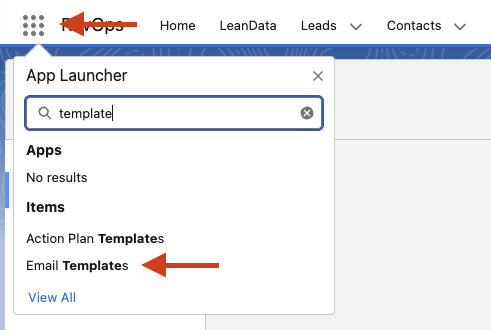
Create a new email template for each step of the Cadence you're creating - for example, if you will be creating a Cadence with 7 email steps, create 7 email templates.
For each template:
- Enter a name (e.g. Gem-E Email 1, Gem-E Email 2)
- Leave Related Entity type blank
- Select a folder for the email templates, ideally create a new folder called Gem-E Email Templates to use for all of them

- Click the "Insert Merge Field" button to select merge fields for the subject line and content/body
- Use the Subject 1 variable and the Content 1 variable in email 1, the Subject 2 variable and Content 2 variable in email 2, etc.
Your Gem-E fields are likely nameddifferently from the example shown below. Regardless of their names, make sure Subject 1 and Content 1 are used in Template 1 and so on.
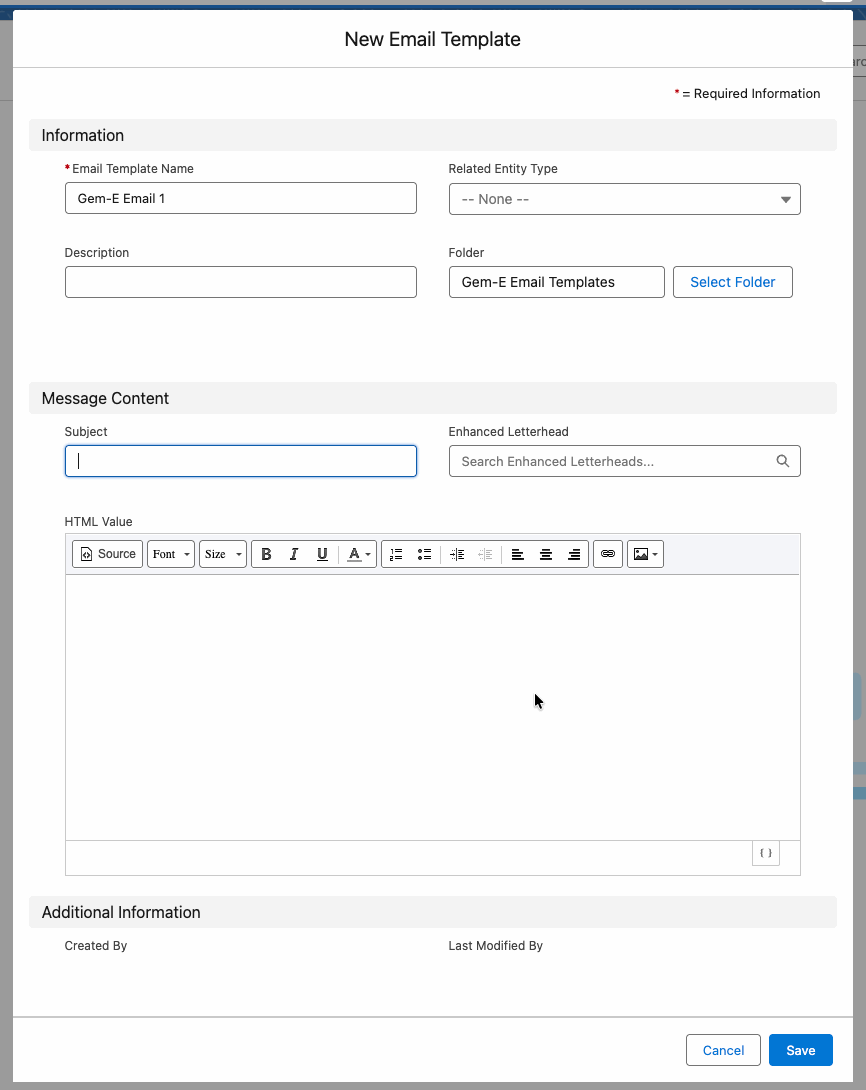
At the end of this process you should have as many email templates as you will have email steps in your Gem-E Cadence.
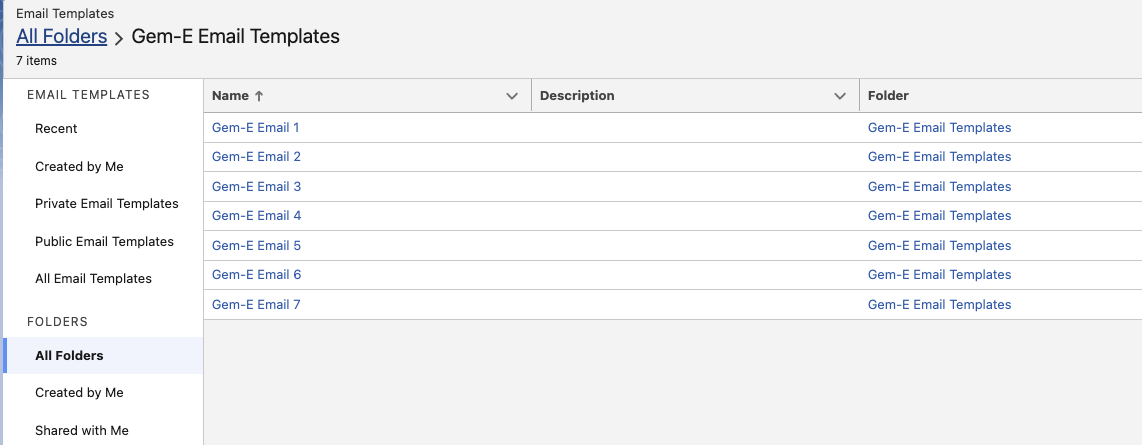
3. Create Sales Engagement Cadence(s) using the above Email Templates
Create a Sales Engagement Cadence using the Email Templates you previously created.
Co-pilot (high touch) Cadence template:
Autopilot (low touch) Cadence template:
Select the email templates you previously created in the appropriate steps.
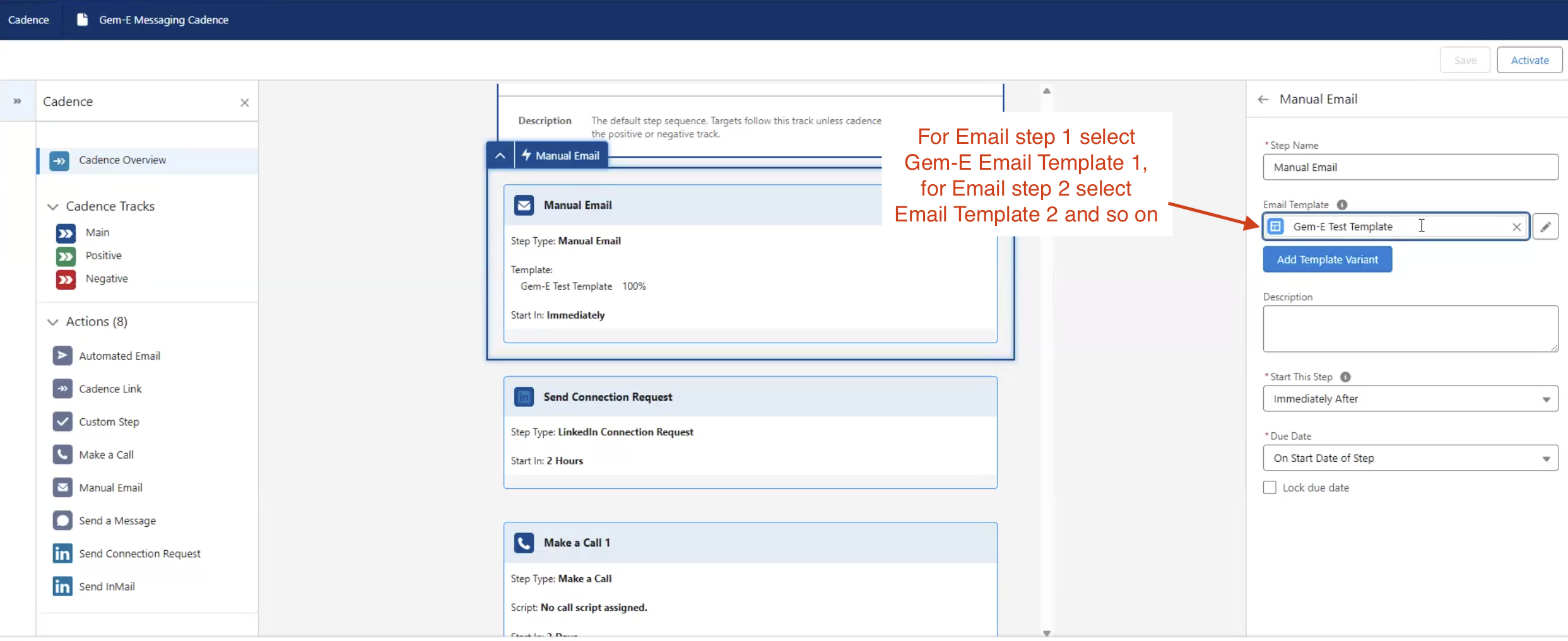
Once your Cadence is configured with the necessary steps, click the Activate button in the top right to make the Cadence eligible for Automated Actions in Step 5 below.

4. Assign Permissions to Admins/Users for Automated Actions
An extra Sales Engagement permission is required for the Salesforce Admin/User who will be building out the automated actions referenced in Step 5 to auto-enroll Leads and/or Contacts into Gem-E Cadences, as well as the end users who will be sending cadence emails (i.e. if you want Leads/Contacts to be added to a cadence automatically on a Sales Rep's behalf, that Sales Rep needs the below permissions assigned as well).
These Admins/Users will need permission to Sales Engagement AND the permission called Automated Action User. See this Salesforce Help Article for more details on this permission.

To assign this permission:
- Navigate to Setup and search Automated Actions in the bar at the top of the page
- Toggle ON automated actions to enable a permission set called Automated Actions
- Assign the Automated Actions permission set to anyone who needs permission to configure them




If this permission set has been newly assigned, log out of Salesforce and back in to make sure the permission is granted before attempting to set up automated actions.
5.Create an Automated Action to automatically enroll Gem-E records
Within the Sales Engagement App in Salesforce, navigate to Automated Actions.

Within Automated Actions, click the New button in the top right.

Configure your Automated Action:
- Action: Assign Target to Cadence
- Cadence: Select the Cadence you created in Step 3
- Perform the action: Automatically
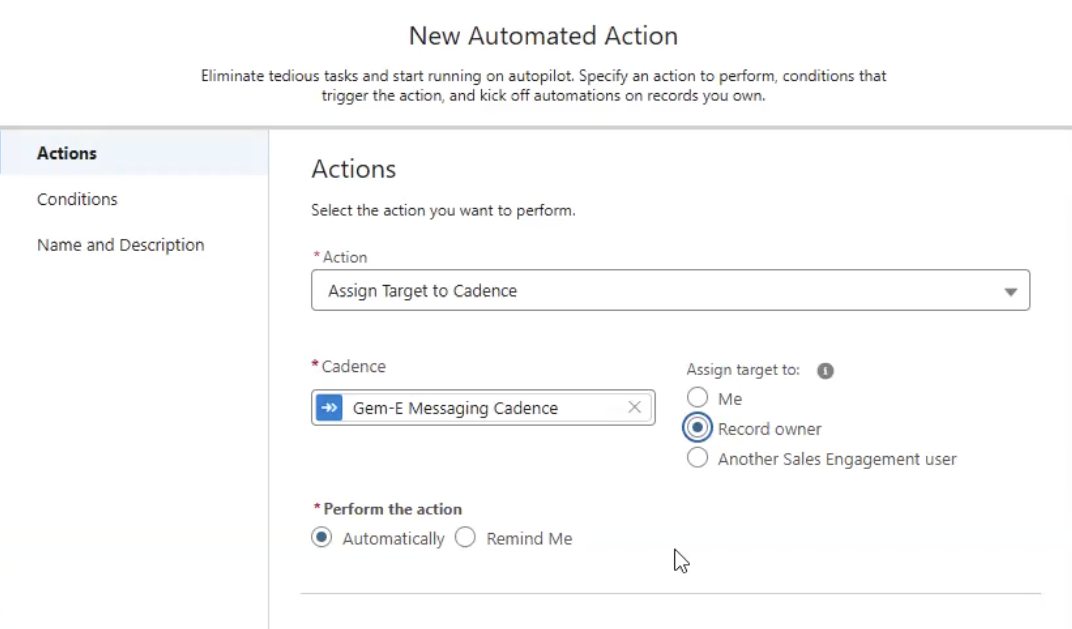
- Select the Object your automated action should apply to (e.g. Contacts or Leads)
- Check whether to perform the action when: A record is created, and every time a field in the condition is edited
- Select the Gem-E Subject 1 field, Operator: Is Null, Value: False (this is Salesforce speak for "when the Gem-E Subject 1 field is not blank)
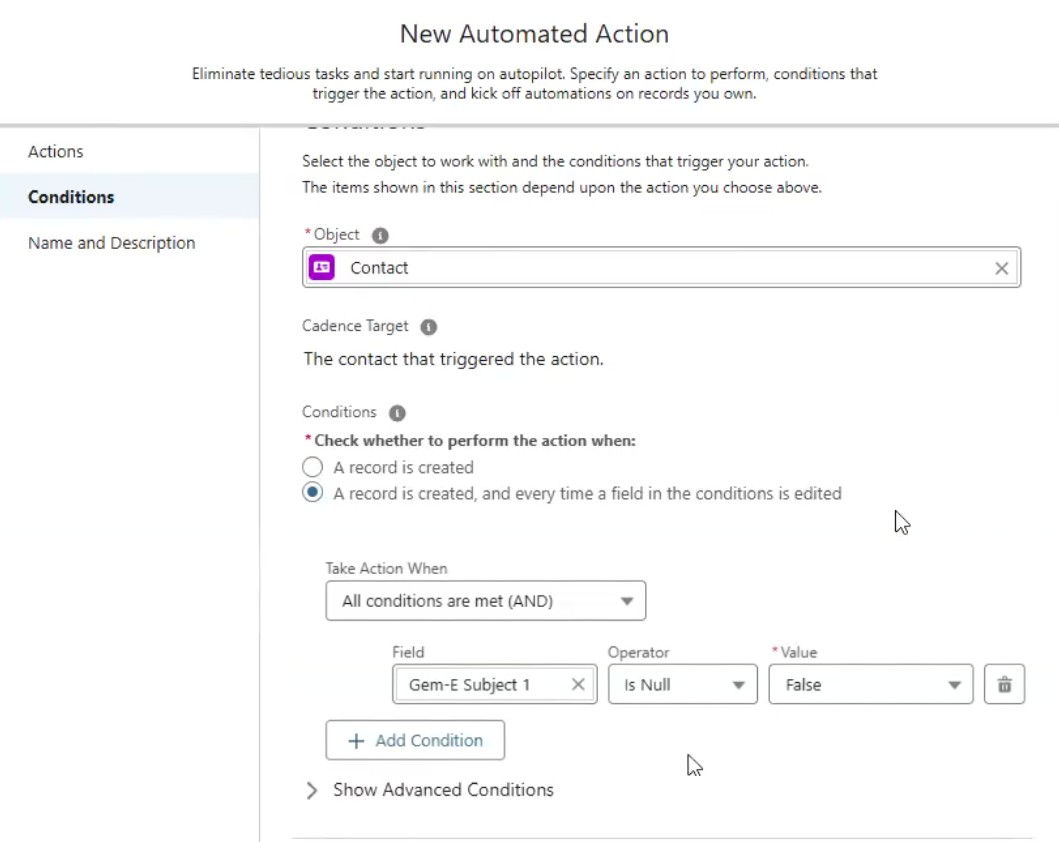
- Give the automation a name, e.g. Gem-E Contacts
- Optionally, include a detailed description of what the automation does
- Save

If you use both Leads and Contacts in Salesforce, start with Contacts and clone the action for Leads once you're finished. In the Lead automated action, choose the Lead Object and corresponding Lead Gem-E Subject 1 field, and give it a different name.

Finally, activate your Automated Action(s). As Leads/Contacts have their Gem-E variables populated by UserGems workflows, they'll start enrolling prospects automatically.

Need more help with automated actions? Refer to Salesforce's help documentation.

